AdvoCat 2014 11
Giving Thanks for Your Support
We are looking forward to a season of thanksgiving and cheer and you are in our hearts and on our minds. Thank you for making it possible for us to provide a permanent home to so many big cats and all you are doing to help us end the trade in wild cats as pets, props and for their parts. Here is the scoop on what is happening at the sanctuary and you can find even more recent news in the Winter Big Cat Times.
Free Thanksgiving Games and Goodies: https://bigcatfun.com/thanksgiving.html
Free things you can do to help include Commenting and Liking posts on our social sites like Facebook. That helps us reach more people with our message that big cats belong in the wild and not our homes.
As you do your holiday shopping, please remember that you can benefit Big Cat Rescue at no cost to you by ordering online at Amazon Smile and choosing Big Cat Rescue as your charity of choice.
Playlist of Videos Since the Last AdvoCat
Be sure to subscribe to our YouTube channel so you never miss another great cat video!
Sad Farewell to the King of Big Cat Rescue
Taking care of 100 exotic animals is a roller coaster ride of emotions as we try to provide the best possible life for them and yet deal with the gut wrenching decisions of life and death. Of our 103 animals, 81 of them are over the age of 12, which is
about as long as they live in zoos or in the wild. An amazing 70 are over the age of 15 (90+ in human years). Even more incredible, 20 are 20 years or older. It is with heavy hearts that we must say good bye to these two furry friends who have touched our hearts forever.
Shere Khan’s parents were bred with the hopes of producing a white tiger cub that would fetch a large sum of money. The breeder pre-sold Shere Khan, but when Shere Khan was born he was orange and considered worthless.
Sadly due to the public’s fascination with oddities many tiger cubs just like Shere Khan are discarded because of their color. Though many people believe that the white tiger is an “endangered” species that should be bred to be saved, this is completely untrue. The white tiger results from a color mutation that happens infrequently in the wild and usually is not passed along. White animals in a forest environment would not live long due to their inability to hide and sneak up on prey. When you hear the phrase “survival of the fittest,” remember that nature does not allow the genetically mutated
white tiger to survive in the wild, therefore, should not be bred in captivity.
In fact you may be surprised to know that every white tiger is the result of incessant inbreeding which results in a multitude of debilitating birth defects. The American Zoological Association (AZA) recognizes that these cats should not be bred and admonishes AZA accredited zoos not to breed any more of them.
Shere Khan was rescued and came to Big Cat Rescue when he was just 3 months old in 1995. He was terribly malnourished and suffered from weakened bones. He was immediately started on a regimen of vitamins and supplements and fed a healthy diet. One month after his rescue China Doll a 5 month old tigress was rescued from a family that could no longer care for their collection of big cats. Shere Khan and China Doll became fast friends and life long companions. (Shere Khan was neutered to prevent any cubs from being produced).
Shere Khan blossomed into a magnificent healthy tiger weighing in at 750 lbs in his prime. He and China Doll spent every day together in their 3-acre enclosure.
Lounging on their jungle gyms, swimming in the lake, and chasing one another around their forest. The two became the king and queen of Big Cat Rescue, icons that will always be remembered as such.
Tragically China Doll suffered from a stroke at the age of 19 in April and due to her inability to recover was euthanized. Ever since the loss of his best friend Shere Khan’s health began to decline. His mobility was ever decreasing. He no longer
played or had the same zest for life, and eventually he refused to eat. Just a few months after the loss of our queen, we suffered the loss of our king. While those of us who are left behind are heart broken and will miss them both greatly we can take solace in knowing that Shere Khan and China Doll have been reunited in that great big forest in the sky where they will run free together forever.

Sad Goodbye to Cody Cougar
Cody and his mate Missouri became unwanted dependents when their owners got divorced. They arrived at Big Cat Rescue in 2000 and their arrival was filmed for Jack Hanna’s Wild Adventures. Cody was neutered and shared a spacious enclosure with Missouri for many years. Over time they grew apart and decided that they preferred their own space so they were separated but remained neighbors. Missouri passed away 2 years ago.
Cody was a very handsome cougar and looked different from the other cougars at the sanctuary. He had a thick robust build, a long fluffy tail and a black nose. Cody was very shy and only had a select few keepers he was fond of. Sadly as Cody grew older his joints became terribly arthritic and he began to suffer from kidney disease. His illness eventually took over and the humane decision to help ease him into the afterlife was made.
Top Shocking Incidents of Big Cat Exploitation – November 2014
We hope by sharing a new list with you each month that you will join us in speaking out for the big cats and cubs that are exploited across this country every day. We encourage you to take one small action today and contact one or more of the offenders below to politely express your concern. Together we can be the voice for the voiceless…together we can make a difference. If you learn of exotic cats or cubs being exploited in your area, please contact Susan Bass at Susan.Bass@BigCatRescue.org.
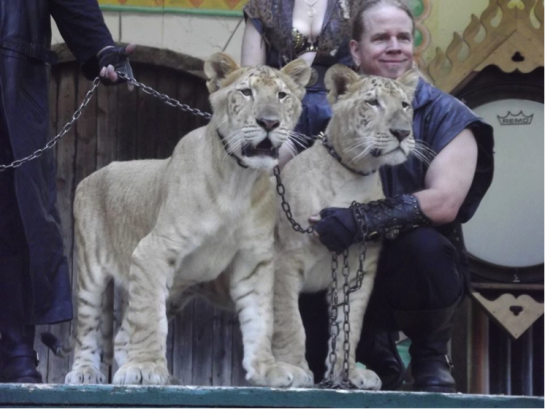
No. 1 The notorious Bhagavan Antle (pictured here) is, we believe, one of the most prolific breeders and exploiters of big cats and cubs in America. He is the founder and director of The Institute of Greatly Endangered and Rare Species (T.I.G.E.R.S.) which is petitioning the U.S. Fish & Wildlife Service for a permit to export 18 of his captive-born tigers to Mexico.
The petition (PRT-36398B) claims he wants to take the tigers to Mexico “for the purpose of enhancement of the survival of the species.” WHAT? There is zero conservation value in his captive-born tigers and no reason to subject the cats to such stress and other possible risks.
Please send a comment by December 8, 2014 to U.S. Fish & Wildlife expressing your concerns and asking them NOT to allow the permit. Make sure you state you are commenting on PRT-36398B. You are the only voice these 18 tigers have. Thank you for speaking out for them!!
SAMPLE WORDING FOR YOUR EMAIL OR LETTER:
Please do NOT grant The Institute of Greatly Endangered and Rare Species (PRT-36398B) a permit to export 18 of their captive-born tigers to Mexico.
The petition (PRT-36398B) claims the tigers will be taken to Mexico “for the purpose of enhancement of the survival of the species.” There is zero conservation value in captive-born tigers and no reason to subject the cats to such stress and other possible risks.
Mail: Brenda Tapia, U.S. Fish & Wildlife Service, Division of Management Authority, Branch of Permits, MS: IA, 5275 Leesburg Pike, Falls Church, VA 22041
Email: DMAFR@fws.gov

No. 2 In a terrible move for our federally protected Canadian lynx, the U.S. Fish & Wildlife Service has approved a permit allowing trappers and agents in Maine to injure or kill these rare and threatened cats during Maine’s trapping season. Maine is the first state to have an “incidental take” plan for Canada lynx.
Wildlife advocates say the state’s plan to minimize harm to lynx falls far short of what is actually needed to safeguard the forest-dwelling cats from trapping, to which they are particularly susceptible. The state is relying almost exclusively on trappers to voluntarily report when they accidentally capture or kill a lynx.
Read more here: https://www.biologicaldiversity.org/news/press_releases/2014/canada-lynx-11-04-2014.html
Please let the U.S Fish & Wildlife Service’s Northeast Region and the Maine Department of Inland Fisheries & Wildlife know animal lovers do not want to see our federally protected lynx injured and killed. Their lives are not incidental!
Contact Assistant Regional Director Paul Phifer of the U.S Fish and Wildlife Service Northeast Region at 413-253-8304 and northeast@fws.gov
Contact James Connolly, Director of the Bureau of Resource Management, Maine Department of Inland Fisheries and Wildlife at 207-287-5259 and james.connolly@maine.gov
Comment on the Maine Department of Inland Fisheries & Wildlife’s Facebook page here: https://www.facebook.com/mainefishwildlife
No. 3 YEAH! Last month we asked you to contact Louisa County High School (Virginia) about the two adult lions they have at every home football game. We’ve learned that THANKS TO YOUR CALLS AND EMAILS the school will no longer have big cats brought to the games and subjected to the noise of crowds, fireworks and cannons!! Thank you for speaking out!!
$42,500 Grant to Match YOUR Donations to New Cat Hospital
Steady progress is being made on the new Windsong Memorial Hospital. At this writing the concrete slab has been completed and the shell of the building is complete. The vendor for the X-ray machine has started the production process (they make these one at a time to order).
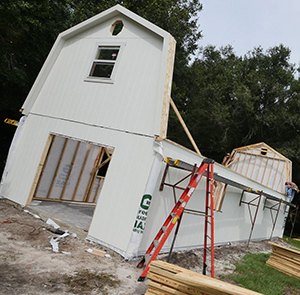 We explored options for bringing the required 3 phase power to us. Because we are at the end of a long dirt road far from the nearest node of that kind of power, the cost to bring power under the only practical scenario was estimated to be $69,000 by our electric company. In addition it required them to get easements, put in new poles, and then put this into their construction backlog. In short, it would have been hugely expensive and taken months.
We explored options for bringing the required 3 phase power to us. Because we are at the end of a long dirt road far from the nearest node of that kind of power, the cost to bring power under the only practical scenario was estimated to be $69,000 by our electric company. In addition it required them to get easements, put in new poles, and then put this into their construction backlog. In short, it would have been hugely expensive and taken months.
With the help of the X-ray manufacturer and our electrical engineering firm we came up with a better solution. Since the X-ray machine is only used intermittently, it can be powered by a generator. Of course, we are not talking about those little units you see in Home Depot. We are talking about a 50kW diesel powered generator that is 8 feet long and weighs a little over one ton! This generator will cost an estimated $25,000 – $30,000 installed. Still very expensive, but less than half the cost of the power line and it can have us up and running MUCH sooner. Currently our engineering firm is completing the electrical drawings that are needed to apply for the electric permit.
So, what is left to do? We need to get the electrical permit, install the wiring and fixtures in the hospital, install the air conditioning and the generator, finish out the inside of the building, get the X-ray machine and install it, and set up the ultrasound system. A lot to do, but we are on the way.
The total cost of the building including the generator is currently estimated to be about $85,000. This week our fundraising received a huge boost from Sarah and Bruce McWilliams, who previously provided the funding for the X-ray machine itself. These passionate advocates for the cats have generously offered an additional $42,500, half the estimated cost of the completed hospital, as a Matching Grant to match all other donations dollar for dollar.
If you are considering a year end donation, this is a great way to leverage it. You can donate via the order form and envelope with this newsletter, or online at https://www.razoo.com/story/Newhospital. Any donations in excess of the building cost will be used for other needs of the cats.
Our sincere thanks to the McWilliams’ for this very generous matching donation and to all of you who help us earn the match!
Federal Bill Update
As this two year congressional session comes to a close at year end, we are excited to report the progress of our federal bill (HR 1998 / S1381) this session. Passing a federal law is usually a multi session process where you steadily build support over time until it finally passes. That is exactly what is happening. At the end of the 2012 session we had about 60 cosponsors in the House and had just introduced the bill in the Senate. We currently have almost twice as many cosponsors in the House, 115! IT IS YOUR EMAILS AND CALLS TO LEGISLATORS THAT IS MAKING THIS HAPPEN!
The important step that needs to happen after a bill is introduced is to have it “heard” in the Committee or Subcommittee that must recommend that it move further in the process. We were thrilled (and somewhat surprised that it happened so soon) that the Subcommittee on Water and Wildlife of the Senate Committee on Environment and Public Works heard the bill in July. Senator Blumenthal, who introduced the Senate Bill, spoke to the committee, and Carole submitted written testimony along with other experts and animal welfare organizations. This is a major step for the bill!
WHAT HAPPENS NOW?
At the end of this two year session on December 31, 2014 all bills expire. When the new session begins in 2015 we will reintroduce the bill, just like we did after the 2012 session. We will go back to cosponsors that are re-elected and ask them to cosponsor again and then continue to build momentum, working toward getting a hearing in the House. This is just part of the normal process and the steady progress we are making is very, very encouraging.
This bill truly is the only real solution to ending the widespread misery that big cats endure in private hands. We are on track in what can be a slow and frustrating process, but one where persistence pays off.
WHAT CAN YOU DO?
As we reported in our summer issue, the bad guys are lobbying against the bill. There is one lobbyist we know is lobbying against our bill and providing what we believe is false information to legislators. And guess who we hear is paying him? Mario Tabruae, who news reports indicate is a self confessed illegal importer of exotic animals, a convicted drug dealer, and was implicated in the brutal murder of a DEA agent. Last week a construction worker at his facility had his finger bitten off by a tiger. A perfect example of the kind of people we are battling.
The key thing now is to build whatever additional momentum we can in these last few months by trying to sign up more cosponsors so we begin the next session in the strongest possible position.
Please visit StopBigCatAbuse.com and email your legislators urging them to cosponsor the bill. If you want to have the most impact, change the language in the suggested text, at least the first line, so it is not perceived as a “form.” That small effort makes a big difference.
If your legislator is already a cosponsor (you can check at www.bigcatrescue.org/house or www.bigcatrescue.org/senate ) the system will automatically send them a note of thanks. This is just as important as asking them to cosponsor. It reminds them that they have constituents who care about this issue, which is important for them to have in mind when the lobbyists for the bad guys visit them.
YOU can make stopping this abuse part of your life’s legacy by letting your legislators know you care and urging others you know to do so. Thanks for helping us stop big cat abuse!
Thank you for catching up with the cats! Please have a Happy Thanksgiving and share this AdvoCat Mewsletter with a friend!



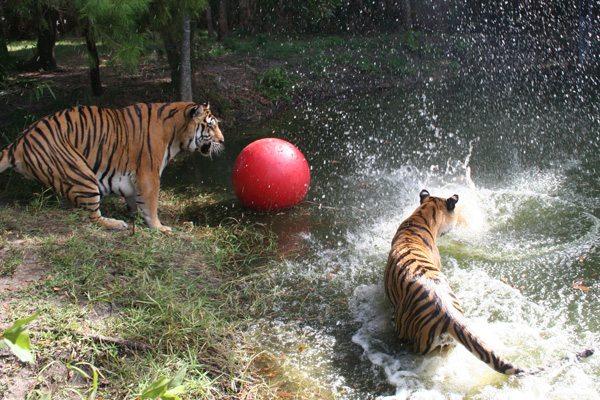
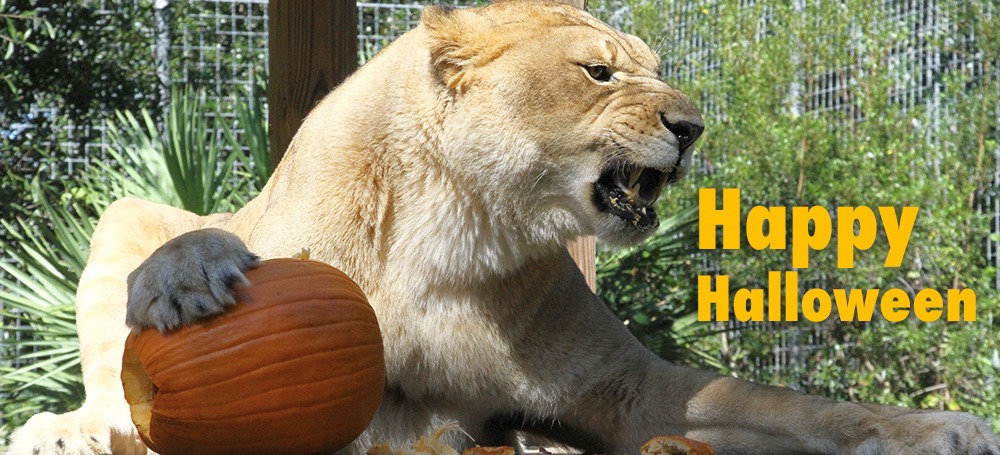

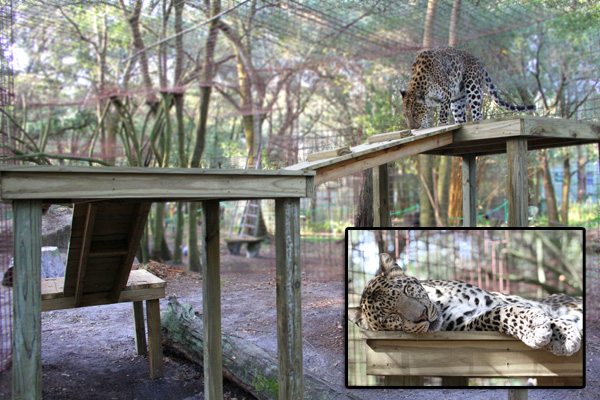
I'm so happy I had the chance to "meet" Shere Khan and China Doll last Christmas. They were a wonderful site to behold. I wish them peace and love in heaven. They will always be in my heart, and they will be sadly missed. However, I'm sure they are much happier now that they are together and forever free…
I got to meet Shere Khan and China Doll during my last visit to BCR back in 2013. They were such BEAUTIFUL & MAJESTIC creatures – Thank You for giving them an amazing life together!
HOW IN GODS NAME CAN A HUMAN "OWN" A WILD ANIMAL ?? THIS IS RIDICULOUS AND WRONG ON EVERY LEVEL. WTF DOES THIS MAN THINK HE IS ?? HOW CAN THIS BE ALLOWED ??? STOP THE CRUEL MONEY MOTIVATED MONEY MAKING DISGRACEFUL RACKET !!!!!
I find it so sad and hopeless for the wild cats and not enough is being done to help them. Feel terrible that I cannot afford to donate to too many animal protection organizations. If I do, it's like nothing.
For all my Facebook animal lovers, I thought you might appreciate our local big cat rescue news.